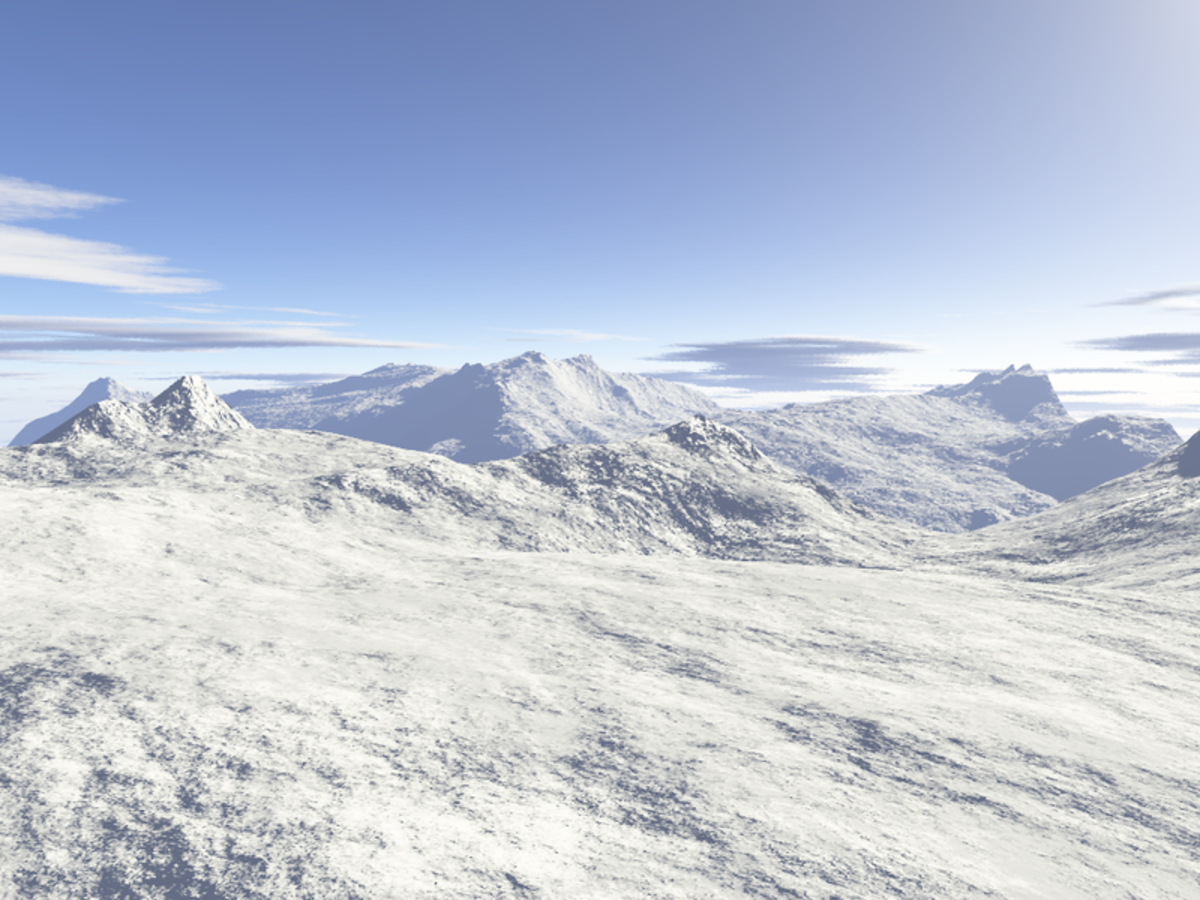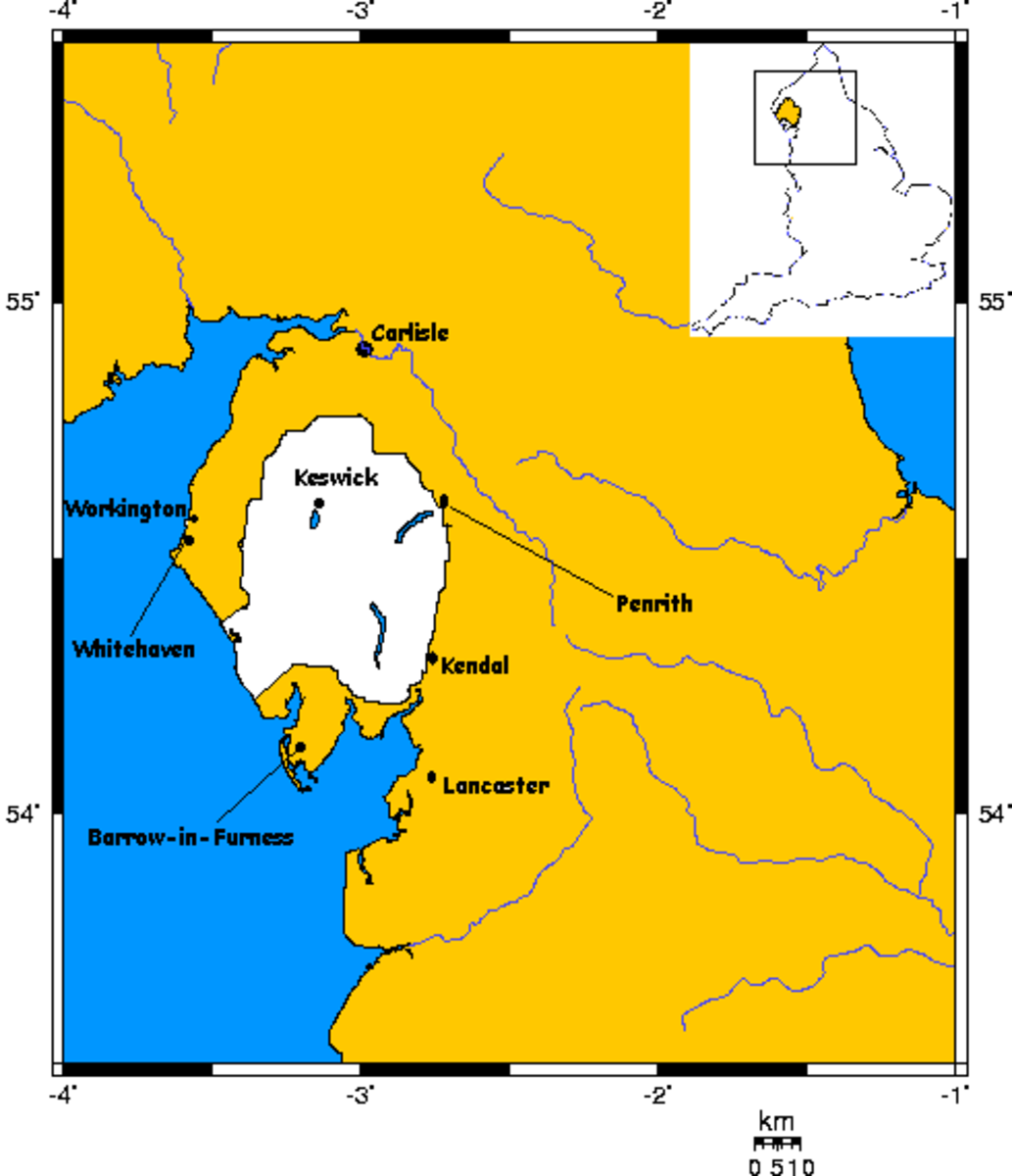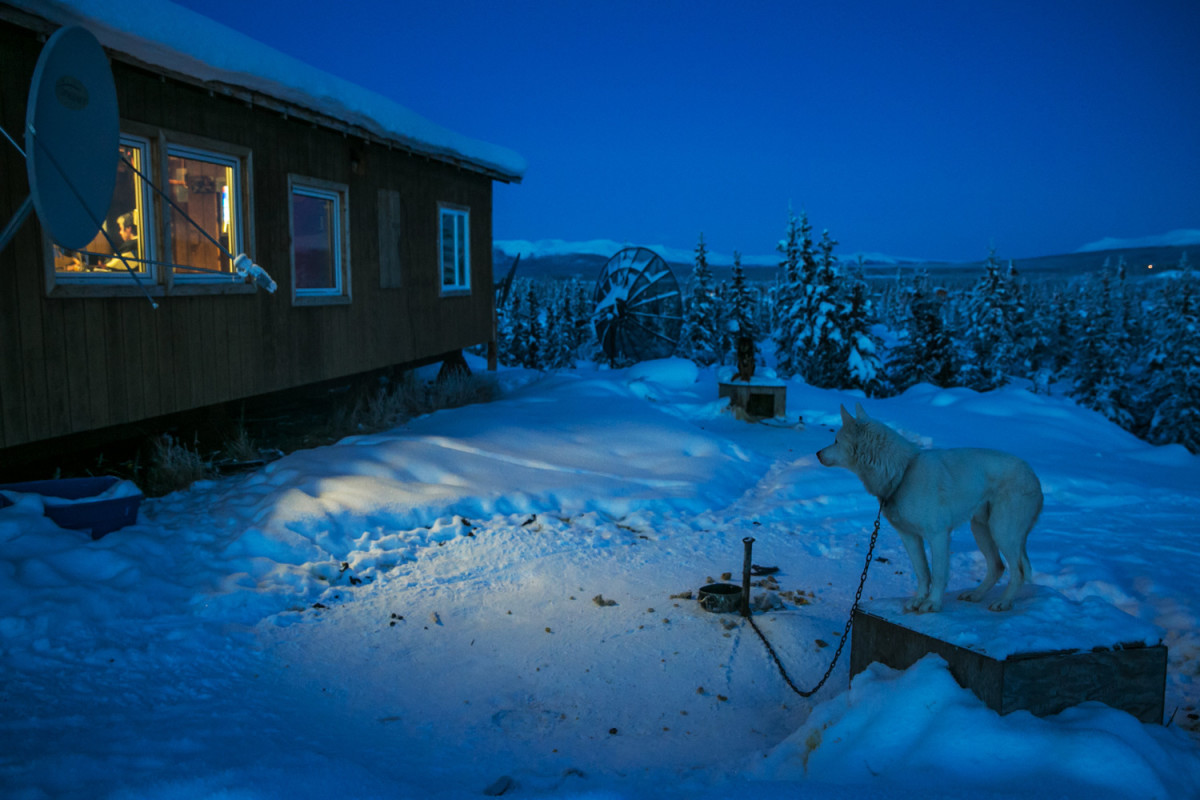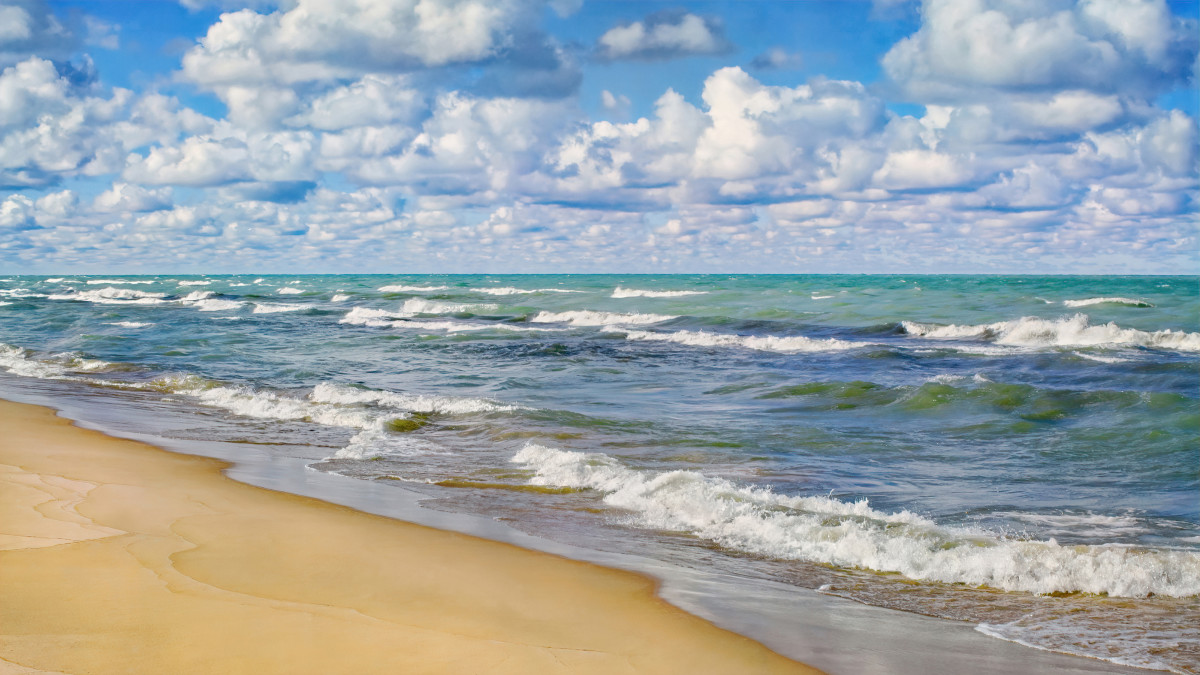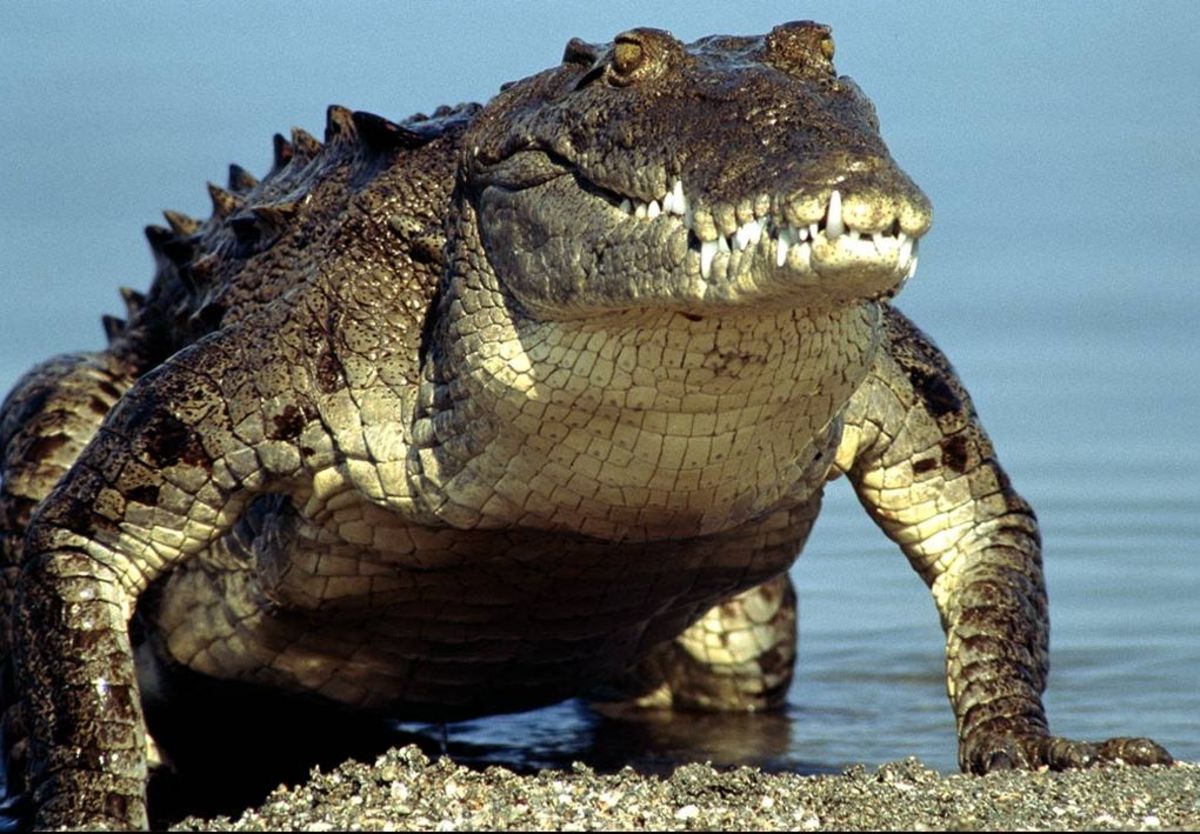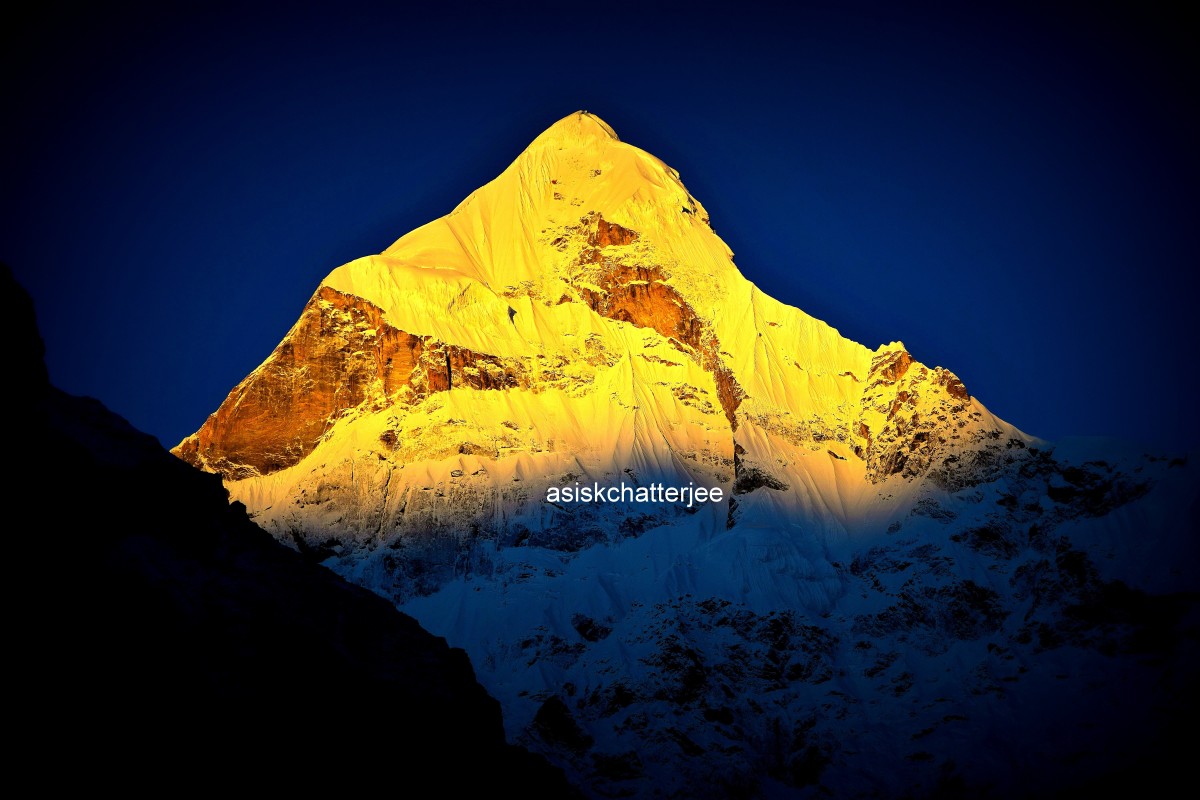The Tundra, Its Animals And Plants
What do you think of when you hear the word “tundra”? Many people think of ice, cold weather, and a flat, boring landscape. Sure, the Arctic tundra has ice and cold. But it’s far from boring!

The Arctic tundra is one of the world’s largest biomes.
At over 5 million square miles, the Arctic tundra is one of the world’s largest biomes. A biome is a particular climate with unique plants and animals. Deserts and rainforests are other examples of biomes. The Arctic tundra encircles the North Pole and extends down to where the forest takes over in North America, Europe, and other areas in the Arctic Circle.
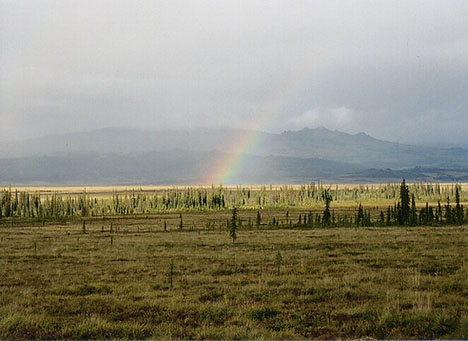
Tundra comes from a Russian word that means “treeless plain.” Besides having no trees, the tundra is mostly flat and extremely cold. The average winter temperature is minus 30 degrees Fahrenheit. And the average summer temperature range is only 37 to 55 degrees Fahrenheit. It doesn’t have a lot of different types of animals, although it does have some.
It has simple vegetation and limited water drainage. It also has a short growth season, from June to August. In addition, the Arctic tundra receives only about 5 to 10 inches of precipitation a year.
The permafrost layer has an important job.
Another really interesting thing about the Arctic tundra is its permafrost layer. The permafrost is just below the land surface and is usually about 10 inches to 3 feet thick. It’s made up of mostly gravel, sand, and other fine, earth material.

Permafrost has a very important job. It helps provide water for the tundra. You might be surprised to hear just how it does this. Because the ground is always frozen, the summer’s melting snow can’t seep down very far. All of the water stays in the top layer of soil. It’s this top layer of soil, called the active layer, where everything comes to life in the summer.
The Arctic’s permafrost affects plants and animals. It also affects man-made things. For example, all the freezing and thawing sometimes cause things like buildings and telephone poles to lean. Another thing it affects is the Alaskan Pipeline. The Alaskan Pipeline moves heated oil across 800 miles of land, most of which has permafrost. The oil must be heated so it doesn’t freeze in the frigid temperatures.
In order to help protect the permafrost, the pipeline runs above the ground’s surface wherever possible. More than 400 miles of the pipeline is above ground. When the pipeline must be buried underground, the oil runs along special coolant pipes. These pipes help reduce the amount of heat that escapes from the oil pipe. This helps keep the permafrost from melting.

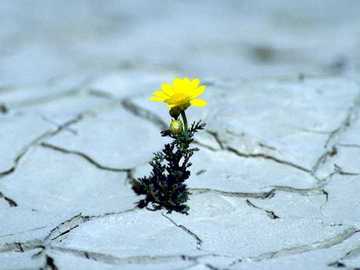
The tundra is home to a variety of plants.
The tundra’s active layer is anywhere from 12 to 40 inches thick. That’s way too shallow for trees to take root, but enough room for a variety of plants to grow. In fact, the tundra has about 1,700 different kinds of plants!
For example, the tundra is home to plants such as primrose, blue-spiked-lupine, wild crocus, slipperwort, and Arctic poppy. These flowers help paint the summer tundra landscape in beautiful yellows, blues, reds, pinks, and purples.
Tundra plants grow in tussocks to adapt to the climate.
Because Arctic plants grow in such a harsh environment, they must adapt. One adaptation is to grow low to the ground and in tussocks. Tussocks are clumps, or bunches, of plants. Growing low to the ground helps keep plants out of the cold wind. And clumping together helps plants keep warm.
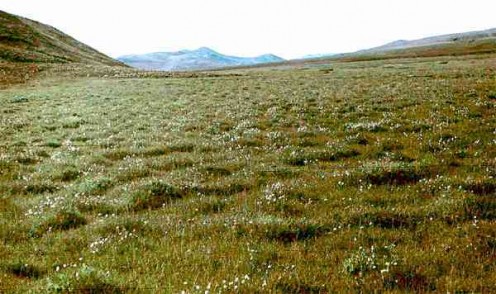
Another way plants adapt in the Arctic is to have fuzzy, dark stems. Dark stems absorb heat. And the fuzz (or tiny hairs) help trap and hold onto heat. Small, fleshy leaves can also help trap heat and moisture.
Tundra plants reproduce in a different way.
Plants must figure out a way to reproduce in a different way, too. This is because there are so few insects for pollination. Some Arctic plants rely on the wind scattering their seeds. Others send out long stems called runners and small buds called bulbils.
The tundra's unique surface designs are shaped by ice.
Another really interesting thing about the tundra is its surface designs. These designs are caused by ice! The changing seasons cause the active layer of the tundra to thaw and freeze, contract and expand. All this expanding and contracting causes cracks in the soil. These cracks fill with water.
The water freezes into ice wedges. In the spring, the tops of the ice wedges melt and make a bigger crack. The following winter, the larger crack fills back up with ice. This whole process keeps repeating until finally the ice wedges push the soil around them up into ridges. These ridges form block-like patterns called tundra polygons.
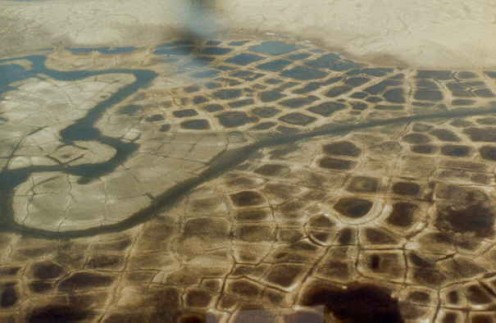
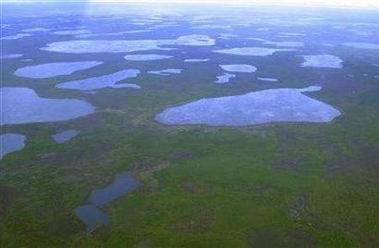
What are thermokarst lakes?
Sometimes ice wedges make lakes. This happens when the top of the ice wedge melts and forms a shallow pool or when intersecting polygons fill with water. The sun heats the water in these pools. This, in turn, causes the frozen ground to melt more and eventually the pool gets bigger. These pools are called thermokarst lakes.

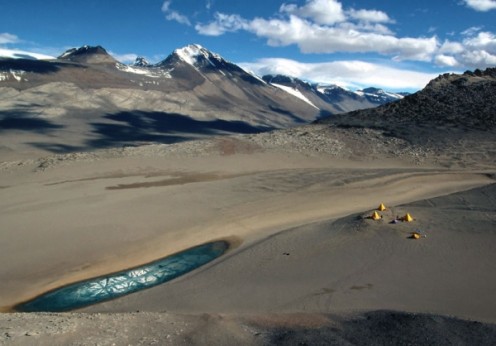
What about Antarctica? - The Dry Valleys
Most of Antarctica is covered in ice - 98 percent in fact. But what would you find in the 2 percent that isn’t covered in ice? Well, for one, you’d find the Dry Valleys. The Dry Valleys are extremely cold areas of dry bare rock and soil located just west of McMurdo Sound on East Antarctica. They are bare because the mountains block the ice cap. Along with the extreme cold, mountain winds prevent any trees, shrubs or flowering plants from growing.
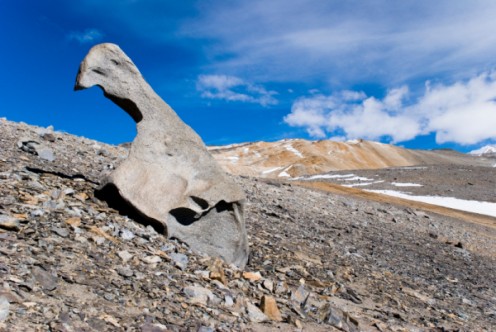
What are ventifacts?
But the winds do help create something that is very interesting and really cool to look at - ventifacts. Ventifacts are rocks that have been smoothed and shaped over time by wind and ice crystals. In other parts of the world, water also helps shapes ventifacts. Sometimes, these rocks have a simple shape. For example, they may look like a pyramid. Sometimes, they are much more elaborate, like some kind of wild art sculpture!
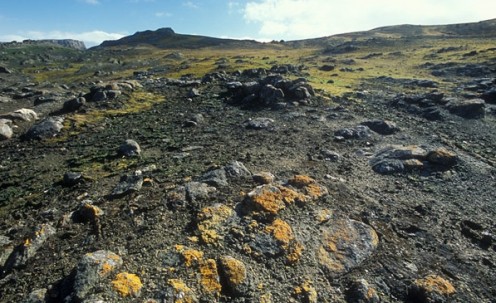
There are lakes and plants in the Dry Valleys.
It might sound strange, but the Dry Valleys have lakes. They are not your typical lakes, though. These lakes are covered in ice year-round. Organisms live in the lakes, and have figured out how to exist in the cold and dark water.
Even though it hasn’t rained here in thousands of years, the Dry Valleys have plant life. There are about 80 varieties of plant life in Antarctica, including lichens, mosses, and liverworsts. Of these three, lichens are the most common.
Lichens are plants that combine two types of organisms - fungi and algae. Lichens are black, gray, or brown. They look like a bunch of dried-out grass and don’t have flowers. One of the reasons lichens can survive in such a harsh environment is because they can shut down their metabolism when they need to. This means they can stop using nutrients and simply store them. Lichens grow mainly on rocks. Antarctic mosses, on the other hand, often grow inside rocks, where there is more humidity.
Like plants in the Arctic, Antarctic plants grow together in clumps for protection from the cold and wind. The only vascular plants, meaning plants with stems, roots, and leaves, are Antarctic pearlwort and hair grass.
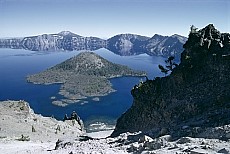
Antarctica has volcanoes and stratovolcanoes.
Antarctica is also home to many volcanoes. Mount Erebus is the continent’s most active volcano, erupting several times a day. It’s located on Ross Island and is nearly 12,450 feet high. It is a stratovolcano, meaning it’s a tall, cone-shaped volcano. In 1908, an explorer named Ernest Shackleton and his crew climbed its summit.
The volcano fascinates scientists as well as explorers. It’s the world’s southernmost active volcano. It is also one of the few in the world that has an exposed lava lake inside its crater. (Mount Erebus’ crater is 2,130 feet across.) Since most volcanoes have covered chambers, the open lava gives scientists a chance to study the molten rock more closely. But not too closely. After all, the lava is 1,700 degrees Fahrenheit.

Animals in the Tundra
The tundra is also filled with some pretty fascinating animals and birds. And each of these animals is well suited to the cold environment. They use a variety of adaptations to survive, including large size, camouflage, thick fur, specialized hooves, small ears and noses, and migration.
It would be difficult to cover every animal because there are so many. Over 200 species of birds alone visit the Arctic Circle each year! But here are a few of the most common and their adaptations.

The Musk Ox
Being big and having lots of fur is one way to keep warm in the tundra. No one knows this better than the musk ox. A male musk ox can be 5 feet tall and weigh up to 700 pounds. He has strong, short legs with sharp hooves, broad shoulders, and lots of long, shaggy fur that often comes close to touching the ground.
The Inuit, or native people of the Arctic, call the musk ox oomingmak, which means “animal with skin like a beard.” The wool undercoat, called a quiviut, is super warm. In fact, it’s the warmest natural fiber in the world. Inuit people use it to make yarn.
Musk oxen protect themselves by using their curled horns and thick skulls to ram enemies. Another way they protect themselves is by traveling in herds. When they are attacked, they stand in a group with the females and calves in the center and the males facing outward. This is usually pretty effective against Arctic wolves. Unfortunately, it also makes herds easy targets for human hunters. By the early 1900s, the musk ox population was near extinction in Alaska. In the 1930s, Congress bought a herd from Greenland and introduced the musk ox back
into the ecosystem.
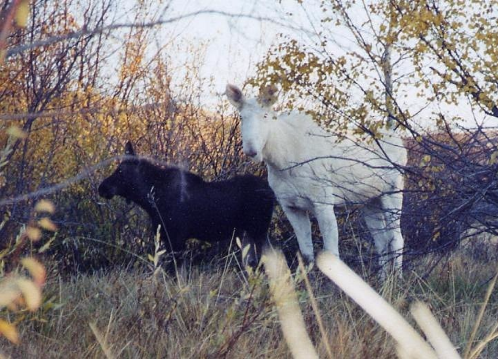
The Moose
Another animal that uses its size to its advantage is the moose. More than seven feet tall and weighing 1,600 pounds, moose have big, flat antlers that can be nearly 6 feet wide. Long, pointy hooves grip the ice, and hollow hairs, which trap air and act like insulation,help keep the moose warm. Unlike musk oxen, moose usually travel alone.
Their diet consists of their favorite foods - Arctic and Alaskan willow, twigs, grass, and aquatic vegetation.They typically eat up to 40 pounds of vegetation a day and must get down on their knees to eat low-lying plants.
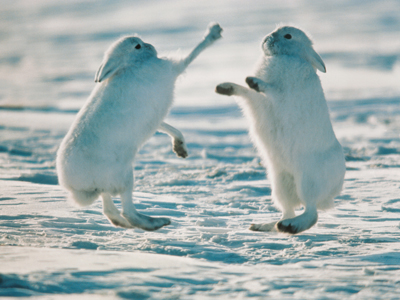
The Arctic Hare
Camouflage is an effective adaptation, and it’s one the Arctic hare uses well. Arctic hares are one of the largest species of hares in the world. They can grow to 28 inches in length and weigh 9 to 12 pounds. With shorter ears than other hares, they can pull their ears back to conserve body heat. Their paws, which are big and flat like snowshoes, help them move
over the snow easily.
The distinctive feature of the Arctic hare is, well, its hair. Their fur is all white during the winter except for the tips of their ears. Being white allows them to hide in the snow. In the summer, an Arctic hare’s fur turns grayish white so it can take cover in the new growth of the tundra.
The Arctic Fox
Another animal that turns white in the winter is the Arctic fox. Its fur, especially its long tail, becomes bushy during the winter. In fact, the Arctic fox will often wrap its long tail around its body like a toasty scarf! During the summer months, Arctic foxes are brownish-gray. This makes it easy for the fox to creep along the tundra rocks and hunt.
Arctic foxes have short legs, short ears, and a short nose. All of these features help keep foxes from losing body heat. Around 15 inches tall, 40 inches long, and weighing 6 to 10 pounds, Arctic foxes look kind of like an oversized house cat. Despite their cute appearance, they are smart hunters who will eat just about anything. They also store away extra food for hard times in their underground dens. (Many times, these dens are used by generations of the same fox family.)
In the summer, Arctic foxes dine on berries, small mammals like lemmings and voles, and birds and their eggs. In the winter, they will frequently follow polar bears out onto the ice to eat the seal meat the bears leave behind.
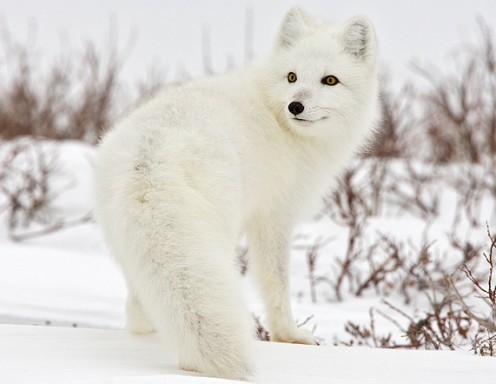
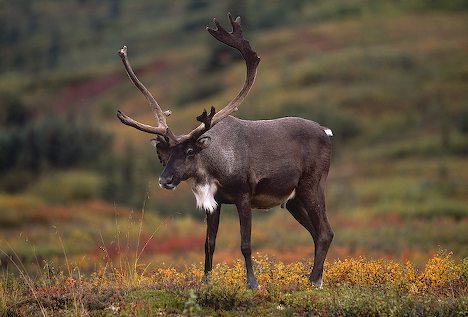
The Arctic Caribou
What do you do if the food won’t come to you? If you’re part of an Arctic caribou herd, you go to the food. Caribous are part of the deer family and a close relative of reindeer. Like other deer, they have antlers, which they use to fight enemies and to show off during mating season. Caribous are around 4 feet tall and weigh 300 to 375 pounds. They eat grass, lichen, and mosses.
Most herds don’t have to travel too far to find food, but other herds do migrate long distances to eat. For example, one herd of Caribou migrates about 3,000 miles over the tundra each year to get to their favorite grazing areas.
The Snowy Owl
Another animal that is known to travel long distances for food is the snowy owl. Dressed in white feathers (or mostly white, speckled feathers if you’re a female), snowy owls blend right in with their wintry environment. They are one of the largest of all owl species. They are two feet tall, weigh about six pounds, and have a wingspan of nearly five feet! They have amazing eyesight and hearing, and use sharp talons to snag prey.
They mostly eat lemmings, but can also eat rabbits, fish, and other birds. Unlike most owls, who are nocturnal (active at night), snowy owls are diurnal. This means they are active both day and night. With days and nights that can last 24 hours, they have to be!
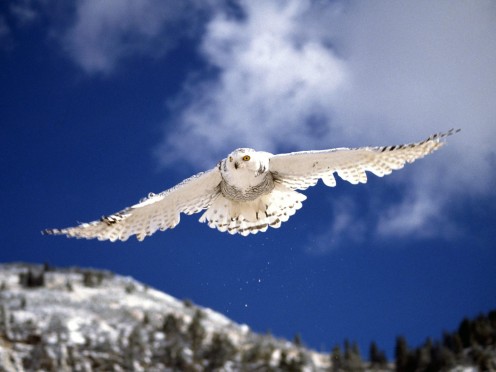
© 2011 Carmen Szentes

